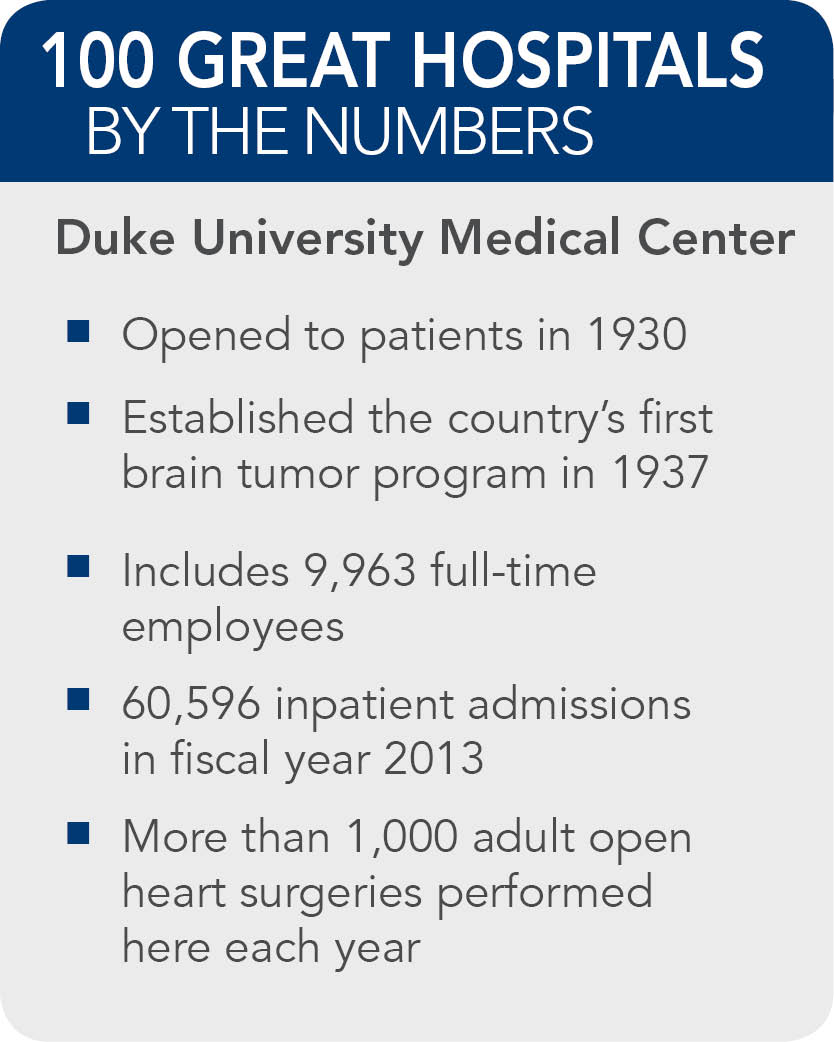Duke University Medical Center (Durham, N.C.) Buchanan Duke, a talented businessman who made fortunes in the tobacco and textile industries, left millions after his death in 1925 with the specification that some of the money go toward the establishment of a medical school and hospital. Duke University Medical Center, established in 1930, has since become a pioneer in medicine and a home to many medical firsts, such as the first brain tumor program and physician assistant program in the country.

Duke University Medical Center dates back to 1930, when it opened its doors to patients as the teaching hospital for Duke University's medical school, which took in 48 students the first year it opened. More recently, this 924-bed hospital cinched a spot on U.S. News & World Report's list of 18 Honor Roll hospitals in 2013-14, meaning it scored at the top in at least six out of 16 medical specialties. Its clinical accomplishments are balanced with its research strides: DUMC's affiliated Duke Clinical Research Institute is the largest academic research organization in the world, particularly known as a pioneer in the field of human genetics.
Last year, Kimberly Blackwell, MD, a clinical oncologist at DUMC's affiliated Duke Cancer Institute, was named to TIME magazine's "100 Most Influential People in the World." The magazine described Dr. Blackwell as "one of the bright young stars in the field" who is developing and improving treatments that target a protein present in a specific type of breast cancer. Duke Medicine's footprint extends overseas, as well: It partnered with the National University of Singapore for a medical school modeled off its own in Durham, for instance. It has fostered initiatives in several other spots around the globe through the Duke Global Health Institute.

 |
 |


